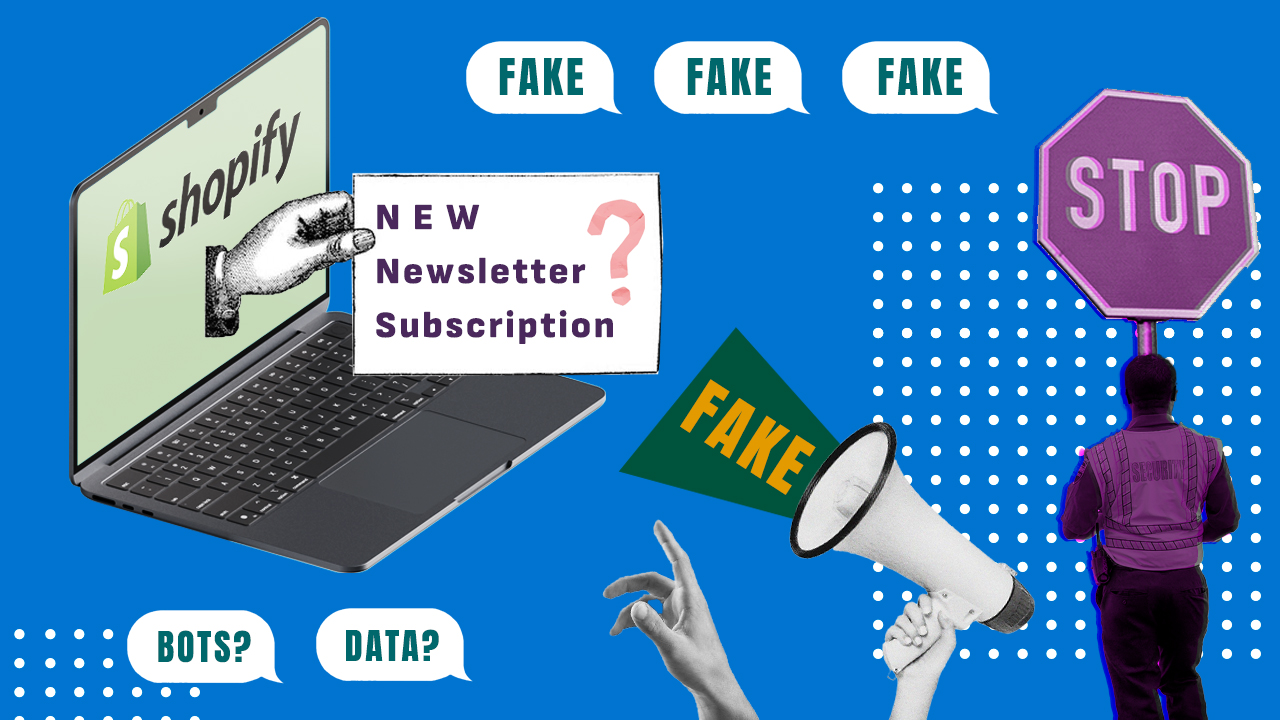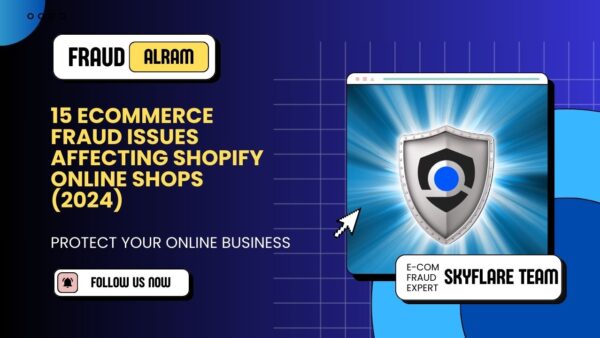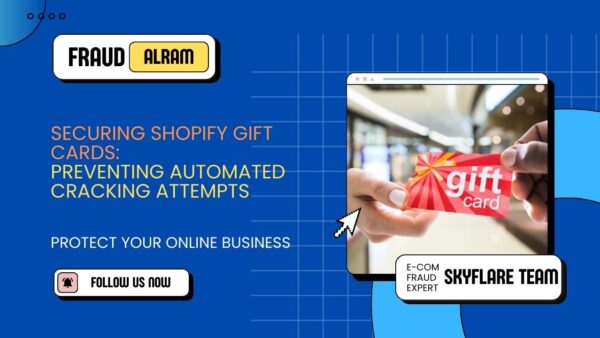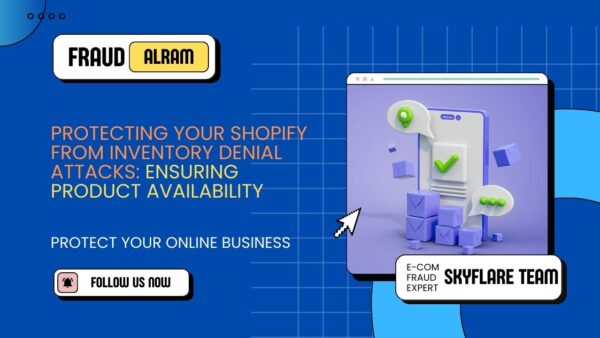In recent discussions on the Shopify Community forums, multiple store owners have reported issues with fake newsletter subscriptions. One user shared their experience of receiving a sudden influx of email subscribers—rising from 213 to 259 in just two days. Despite enabling Google reCAPTCHA, many of these new subscribers appeared suspicious, with discrepancies between their listed locations and the store’s primary market.
Another user highlighted the challenges of dealing with fake customer accounts generated through the Customer Login portal. Despite implementing security measures like reCAPTCHA and even removing the “Create account” link from their site, they continued to face issues with fake accounts, which did not affect their traffic analytics but appeared directly in their customer lists. This ongoing problem has been likened to a virus, significantly impacting their marketing efforts and prompting them to consider moving their store if the issue persists
Is Fake Newsletter Subscriptions a Problem for Shopify Users?
Yes, Many Shopify stores may not have sufficient security measures in place to prevent bot activity. Without tools like CAPTCHA, double opt-in, and email verification, it’s easier for bots to penetrate and create fake subscriptions.

Understanding Fake Newsletter Subscriptions
Fake newsletter subscriptions on Shopify are a significant issue that can impact store operations, email deliverability, and marketing effectiveness. Here’s a closer look at what fake newsletter subscriptions are, why they happen, and their implications:
What are Fake Newsletter Subscriptions?
Fake newsletter subscriptions occur when bots or malicious actors sign up for your newsletter using invalid, temporary, or random email addresses. These can include:
- Disposable Email Addresses: Temporary emails that are created for short-term use.
- Invalid Email Addresses: Randomly generated emails that don’t correspond to real accounts.
- Bots: Automated programs designed to repeatedly fill out sign-up forms.
Why is This Happening on Shopify?
Bot Activity:
- Automated Testing: Bots are often used to test the security and functionality of e-commerce websites. This includes signing up for newsletters to see if the forms can be exploited or to gather information.
- Resource Exploitation: Bots may target your store to drain server resources, causing delays and increased operational costs.
Email Harvesting:
- Data Collection: Malicious actors might use fake sign-ups to collect valid email addresses from auto-responses and newsletters, which can then be used for spam or phishing attacks.
Negative SEO Tactics:
- Competitor Sabotage: Fake subscriptions might be a strategy used by competitors to harm your store’s email marketing campaigns. High bounce rates from invalid emails can damage your sender reputation, reducing overall deliverability and effectiveness.
Insufficient Security Measures:
- Lack of Protection: Without robust security measures such as CAPTCHA, double opt-in, and email verification, it is easier for bots to penetrate your system and create fake subscriptions. Many Shopify stores may lack these essential defenses, making them vulnerable to such attacks.
Testing Store Defenses:
- Probing for Vulnerabilities: Bots might be testing your store’s defenses to identify and exploit weaknesses. This can be part of a larger strategy to breach security measures for more severe attacks later on.

Implications of Fake Newsletter Subscriptions
Inflated Subscriber Counts:
- Misleading Metrics: Fake subscriptions can inflate your subscriber count, giving a false impression of your audience size and skewing your analytics.
Email Deliverability Issues:
- High Bounce Rates: Sending emails to invalid addresses results in high bounce rates, which can damage your sender reputation and lower your overall email deliverability
Resource Wastage:
- Increased Costs: Managing and filtering out fake subscribers can waste valuable resources, both in terms of time and server capacity.
Reduced Campaign Effectiveness:
- Lower Engagement: Fake subscribers do not engage with your content, leading to lower open and click-through rates, which can hurt your email marketing performance metrics.
Learn more about Shopify fraud issues: 15 Ecommerce Fraud Issues Affecting Shopify Online Shops (2024)

FAQs: Fake Newsletter Subscriptions on Shopify
How do fake newsletter subscriptions affect my Shopify store?
Fake newsletter subscriptions can inflate your subscriber count, leading to misleading analytics. They harm your email deliverability rates due to high bounce rates from invalid email addresses. This damages your sender reputation, making it harder for your genuine emails to reach your customers’ inboxes.
What are common signs of fake newsletter subscriptions?
Common indicators include a sudden spike in newsletter sign-ups, numerous sign-ups from similar IP addresses or email domains, and high bounce rates in email campaigns. These signs suggest that bots or malicious actors might be targeting your sign-up forms.
Why are bots targeting my newsletter subscriptions?
Bots target newsletter subscriptions for several reasons, including testing the security of your forms, harvesting email addresses for spam or phishing attacks, and draining your server resources. In some cases, competitors might use fake sign-ups as a negative SEO tactic to harm your email marketing efforts.
How to stop fake newsletter subscriptions on Shopify?
Implementing CAPTCHA on your sign-up forms, requiring double opt-in for new subscribers, and using email verification tools such as Skyflare are effective strategies to stop fake newsletter subscriptions on Shopify. These measures ensure that only genuine email addresses are added to your subscriber list.
How can I monitor and manage subscription activity to detect fake sign-ups?
Using analytics tools to monitor sign-up activity can help you detect unusual patterns. Look for sudden spikes in sign-ups, high bounce rates, and sign-ups from suspicious IP addresses. Regularly review your subscriber list and use email verification tools to maintain its health.
What are the consequences of not addressing fake newsletter subscriptions?
If left unchecked, fake newsletter subscriptions can lead to inflated subscriber counts, poor email deliverability, and reduced engagement metrics. This can ultimately harm your email marketing campaigns, reduce your marketing ROI, and damage your store’s reputation.
Conclusion
Fake newsletter subscriptions on Shopify can significantly disrupt your email marketing efforts, leading to inflated subscriber counts and poor deliverability. These issues are often caused by bots and malicious actors exploiting security vulnerabilities. Regularly monitor subscription activity to identify and remove fake sign-ups, ensuring your email list remains healthy and effective. By taking these proactive steps, you can protect your store’s reputation, enhance email marketing performance, and focus on engaging genuine customers.

Expert commentary
The most popular way to avoid fake signups is using CAPTCHA. While CAPTCHA helps deter automated bots, it is not foolproof against sophisticated attacks and human-powered spam. Advanced bots can bypass CAPTCHA, and malicious actors can still manually input fake data. Additionally, CAPTCHAs can frustrate genuine users, potentially reducing legitimate sign-ups. Comprehensive security measures, including email verification, behavioral analysis, and rate limiting, are necessary to effectively combat fake subscriptions.
Read more: Preventing Cart Abandonment Bots on Shopify: Effective Solutions




